Embroidery has been an art as far back as people can remember and due to the innovation of technology, it has enhanced the art of putting designs on fabrics. Nowadays, the embroidery industry is still considered to be a rich business and people are able to use their imagination in the sphere of business and earn good money. No matter whether you are a professional stitcher or a manager-to-be who decided to expand the field of business expertise, starting an embroidery business might be both enriching and profitable. This step-by-step resource will take you from the ground up from understanding how to start your embroidery business to managing, promoting, and expanding it.
Understanding the Embroidery Business Landscape
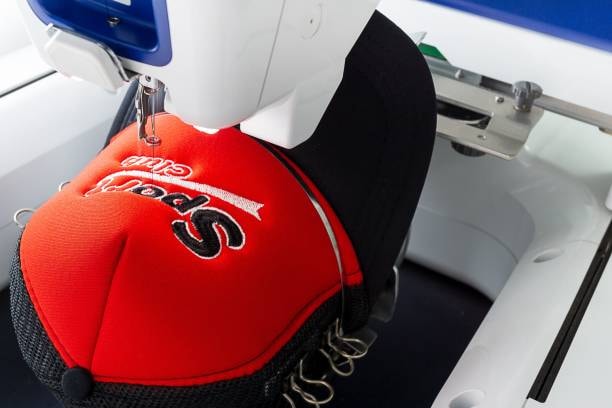
Look and read the Embroidery business landscape
A. Market Overview
Custom embroidery business market is very extensive with application, including fashion accessories and gifts, business and corporate wears, official uniforms, and commercial brands and products. Over the last few years, many people and companies have called for special, distinct and other forms of embroidery businesses’ products. Environmental analysis and the recognition of market opportunities can lead to effective positioning of one’s own custom embroidery clothing business.
B. Target Audience
Choose target elements based on audience, interest, skill, and other market research and examination of specific audience. Potential target markets include:
- Individuals: Selling specialty items such as towels that have the customer’s name on them, baby blankets with the name and date of birth and so on, and clothes with the name of the child.
- Businesses: Supplying corporation wear, products with the company logo, and work wear.
- Organizations and Clubs: Designing and producing promotional t-shirts, jerseys/sweatshirts, caps, badges, bags, mugs, mouse pads, water bottles, key rings, calendars, diaries, T-shirts, polo shirts, uniforms, towels and engraved pens for sports teams, schools, non-profit making organizations and social clubs.
- Special Events: Making goods for weddings, birthdays or any other occasions that may be in the market.
C. Competitor Analysis
It is recommended to define local and online competitors and then study their services, prices, and promotion techniques. Search for the Opportunities and special services for custom products or others you might need to provide or find a specific market for a particular good. Knowing the degree of competition will assist you to create a competitive advantage over your counterpart.
Setting Up Your home based Embroidery Business

A. Business Plan
Business strategy is a key issue that cannot be omitted in any business proceeding as a sound strategy forms the core of the successful business move. It should include your business objectives, your target audience, your competitor’s analysis, your marketing plan, your revenue forecasts, and the ways in which you intend to operate your business. =create specific detailed proposition of the company’s development and it will also be useful in order to get financial support.
B. Legal Structure and Registration
Decide under what legal form you want to operate your business: you can be a sole trader, partner, LLC member or a corporation. It is also important to register your business with the relevant government agencies while obtaining the suitable business license or permit for your business where necessary. It is wise to seek legal advice to know what the local, state, and federal laws expect of you then.
C. Location and Workspace
Determine if the individual will run the business licenses the embroidery business owner from the home or if they will rent a commercial space elsewhere. It should also be large enough to accommodate your embroidery machine(s), materials you will use and storage of some of these items. Non-commercial location can be cheaper since it is at home, but a commercial one can have more traffic and appearance of the business.
D. Equipment and Supplies

To enhance the organization’s embroidery services, obtain the best home embroidery machine, equipment, embroidery projects, and embroidering supplies. Key items include:
- Embroidery Machine: Make a selection of a machine that is appropriate to your business and its financial capacity. There are certain elements that need to be taken into consideration, for example, the number of needles and embroidery area size, and machine’s speed .
- Software: Embroider design software is another investment that helps in the creation as well as editing of the designs. Some of these include: Wilcom, Hatch, and brother PE-Design.
- Hoops and Frames: Fabric requires hoop and frame in different sizes so as to ensure that it is held in a proper manner during the process of embroidery.
- Thread and Stabilizers: Buy a pack of various threads and stabilizers depending on the type of fabrics you will be using and the designs that you wish to make.
- Other Tools: Some of the requisites that may be needed in sewing include scissors, needles, bobbins, and marking tools among others.
Establish Internet sales with a rather vast product line including the most popular products that can be embroidered like hats, shirts, bags, and towels. Customers can add stocks to your store depending on the increasing demand and recommendations given by customer on what you should add to the e-store.
F. Pricing Strategy
This means that in the process of sourcing materials and setting the price for the product, ensure that it can at least cover the expenses and carry some profit with it yet remain affordable for consumers. It requires one to factor many issues like the extent of design, the nature of the item to be embroidered, cost of shipping and time that the job will take. This strategy can attract more clients since the company offers better rates to organizations ordering in bulk while at the same time effectively reducing spending.
A. Brand Identity
Brand image provides differentiation from your competitor organizations and informs your business ethics and character to the patrons. Develop a cohesive brand identity that includes:
- Business Name: It should be unique, memorable and should relate to the company for which it is being used.
- Logo and Tagline: Design a professional logo that represents your business and tag line that summarizes the company.
- Color Scheme and Typography: Continuity of colors and fonts helps in branding thereby ensuring that consumers are familiar with the image used in the marketing assets.
B. Online Presence
The importance of using the Internet is the possibility of obtaining more contacts and gaining trust. Key components include:
- Website: Design a clean website to advertise your products and services, prices and your company’s phone number or address. If you intend to sell goods and services directly to the public, you should incorporate an online shop.
- Social Media: Some of the platforms include Instagram, Facebook, and Pinterest where artists can share their work with customers as well as the business.
- Online Marketplaces: Other suggestions for getting more customers include making the products available on outlets such as etsy, amazon and eBay.
C. Networking and Partnerships
Establish links with local enterprises and associations and popular people in order to find customers, secure recommendations and attract more clients. Go to fairs, exhibitions, trade shows, and local community events where you can present your art and find people to work with.
D. Advertising and Promotion
Advertise your business to avail the general awareness trip about the business so that people can come looking for the business. Effective strategies include:
- Search Engine Optimization (SEO): To enhance search engine visibility, incorporate various tactics that tend to improve the flow of traffic to your website naturally.
- Pay-Per-Click (PPC) Advertising: Google Ads and Facebook Ads are good places to advertise to the potential customers.
- Email Marketing: Create an email list of subscribers and then always keep sending them newsletters, changes in the business circulation, special offers, and sales.
- Content Marketing: Develop content that will entice the clients; this could be article or blog, instructions or any other video.
Running Your Embroidery Business with embroidery machines

A. Production Workflow
Systematize the production process in the context of the temporal efficiency and the quality of work produced. Key steps include:
- Design Creation: This customer request can be met through your embroidery software either in creating a new design or modification to a specific design given by a client.
- Hooping and Stabilizing: When sewing these kinds of designs, ensure that the fabric is secured in the hoop and the recommended stabilizer is used.
- Embroidery: To make sure that the article is being embroidered as per the design uploaded, load the design in the machine and observe the production process to check for correctness and quality.
- Finishing: The last operations include thinning the threads, eliminating stabilizers and examining the end product for any manifestation of poor work.
B. Quality Control

One major general business recommendation worthy to be implemented is a quality control procedure that will check every manufactured item against some set benchmarks. Lastly, for each piece that is created, take time to check the flawless finish, quality and be sure that all the pieces look alike before delivering it to the customer.
C. Customer Service
Understanding the customers’ needs and being able to meet them promptly are key factors in guaranteeing preference from consumers. Key practices include:
- Clear Communication: Understand that your clients should be updated with their orders and ensure that they get a quick response to any inquiry made.
- Order Tracking: The other requirement for this system is to deliver the updated order information and status to customers.
After-Sales Support: If at all they have any problems or grievances they should be addressed and given solutions accordingly to satisfy the customer.
D. Managing Finances
Financial management is an important aspect that needs to be taken seriously in any business for great results to be achieved. Key practices include:
- Budgeting: Management of financial resources, it is recommended that organizations develop financial budgets to help control their expenses and direct the available finances to the growth point activities.
- Bookkeeping: Write down all the financial operations, and use special programs to record the incomes and expenses.
- Pricing: Conduct price check analysis and control to confirm the fixed price is profitable enough.
- Tax Compliance: Be aware of the taxes related and the deadlines and maybe engage a qualified accountant who will help one to meet the requirements.
E. Inventory Management
Effective stock control helps you order and Ac the required stocks and products without the excess. Key practices include:
- Inventory Tracking: Management for inventory using software and automate the process of restocking.
- Supplier Relationships: Develop good working relationship with the suppliers in order to get goods on time and at the right price.
- Demand Forecasting: Monitor and examine the sales in order to forecast the demands in the future then overcoming the failures of overbuying and understocking.
Growing Your Embroidery Businesses
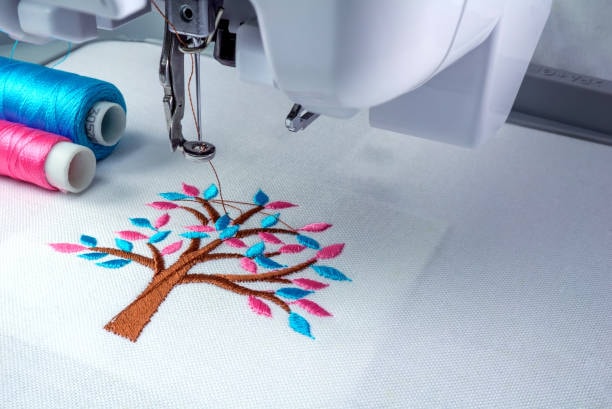
A. Expanding Your Product Line
When undertaking business, use strategies such as product differentiation to increase on a variety of products to capture a bigger market. Potential additions include:
- New Apparel Items: Extend the types of clothes to jackets, hoodies and aprons.
- Home Decor: Introduce items like pillows, curtains, and table cloths, which have embroidering on them.
- Accessories: This can be done with such products as embroidered bags, hats, and scarves.
B. Diversifying Services
In this way, expanding the range of services may be useful for creating more revenues from different clients. Potential services include:
- Custom Digitizing: Provide digitizing services to convert customers’ designs into the embroidery files.
- Bulk Orders: Offer wholesale embroidered products to corporate companies, schools and organizations.
- Workshops and Classes: Organize workshops and classes so that people could learn more about this craft and the best methods to use.
C. Scaling Operations
Expanding your activity will save money, allow you to respond to the growing number of orders and develop your company. Key strategies include:
- Hiring Staff: Increase staffing level: People who are interested can be hired in large number to help in matters relating to production, customer care and other administrative issues in the company.
- Upgrading Equipment: Acquire more embroidery machines, or machines with higher production capability in this line of production.
- Streamlining Processes: Adopt or put in place various procedures that can help to tackle the issue of timings and minimize the amount of time taken by the organization.
D. Building a Strong Online Presence
Never neglect your own online marketing to positively appeal to the customers to do business with you. Key strategies include:
- Content Marketing: Member of the tribe should disseminate quality content to capture the attention of their audience and to enhance the search engine results.
- Social Media Marketing: Engage in social media networking to promote the work that is being done, the customers and the business.
- Online Reviews: Making customers come back and write positive comments on the business on Google or Yelp to help in gaining the customers trust.
E. Exploring New Markets
Venturing into new markets is always good for your business as you get to explore new niche market, and thus looking for new clients. Potential markets include:
- Corporate Clients: Market your products to big companies and observe their interest in customized clothing and corporate gifts and other business accessories.
- E-commerce: Retailing globally, to increase the accessibility of your online shop or extend the existing internet store.
- Wholesale: Sell you products directly to other retailers and other business merchants a relatively cheaper prices than the market start an embroidery business.
Key Challenges and Solutions for your embroidery business

A. Managing Costs
This principle underlines the need of a proper cost management to keep shipping costs and keep the actual profitability high. Some strategies to keep startup costs well under control include:
- Bulk Purchasing: It is better to purchase materials in large quantities so that one can benefit from piece rate prices of the suppliers.
- Energy Efficiency: Use energy supplied appliances to cut on costs of energy used in the organization.
- Lean Operations: standardize many activities to reduce variability and hence, increase productivity.
B. Staying Competitive
To stay competitive in the embroidery products market, focus on:
- Innovation: Always ensure that you have new products and or ways of going about your business.
- Customer Service: Offer your consumers with the best services in aim of gaining a pool of loyal customers.
- Marketing: Some of the recommendations that can be made include the following: Adopt the new marketing techniques to create awareness to the new clients and engage those clients that were initially in the market.
C. Handling Seasonality
Seasonal operation is quite evident for embroidery businesses as the demand is likely to change from one season to another. Strategies to manage seasonality include:
- Diversifying Products: By introducing products with attractive features that suit the different markets at different times of the year, then retailers can stand to benefit big time.
- Seasonal Promotions: It is recommended to spend vouchers and special offers during the low-activity periods.
- Flexible Staffing: This mean hiring temporary staff during such periods when there is likely to be increased sales and hence increased workload.
D. Maintaining Quality
Hence, quality has a very crucial place in the eyes of the customer and how the business is marketed employer identification number. This means that the organization should consider ways to ensure the quality of the products delivered, and should provide for training for yourself and your staff.
Case Studies and Success Stories
A. Small Business Success
Explain success stories of small embroidery businesses that started with a small capital and bear a low cost and has expanded. These stories may give hope and tips to the growing individuals who are planning on making money to put up new business companies.
B. Corporate Success
Illustrate cases of custom embroidery of companies with large corporate clients targeting those that can produce small embroideries that are called for in some massive orders. Enumerate as to how these clientele was cultivated and maintained by the join embroidery firms multi needle machines.
Understanding the three personalities of every new business owner

Entrepreneurship is an adventure that entails Idea formulation, formulation and implementation functions; confusion and satisfaction; evolution and discovery. As you enter the entrepreneurship, several aspects of your character react in various ways depending on a stage of your own business being. The clarity of these three main personalities that are present in any type of business will assist one in handling the issues of business ownership well.
1. The Visionary

A. Defining the Visionary Personality
The Visionary is the visionary, the strategist, and the go big or go home sort of person. This personality is based upon passion, creativity as well as the desire to make a difference. Indeed, strategists are the ones that have new ideas and perceive possibilities in where other people only see challenges.
B. Characteristics of the Visionary
- Creativity: Practitioners are very innovative and always come with new ideas and concept into the business world.
- Passion: They are very possessive about their business and about what they are trying to achieve for the betterment of the society.
- Future-oriented: Here, visionary meant identifying long-term objectives and the general strategy of the business.
- Risk-taking: They accept the fact of the risk taking and uncertainty in order to realize the vision.
C. Role in Business Development
The Visionary is most relevant in the formation stage of the business. Well, they are the ones who initiate the whole concept, they narrow it down where the products would be sold and they establish the differentiation proposition other embroidery businesses. A visionary is always eager to transform the outlook of others towards his vision and can easily raise funds from investors, persuade partners, and get customers due to his inspiring vision.
D. Balancing the Visionary
Nevertheless, for sustainable development, Visionary should be balanced by the Samurai personality, dedicated to planning and achieving results target market. As much as visionaries are key to any organizations’ growth, they may sometimes give a raw idea too much thought and fail to identify or remember the factors that go with the raw idea. To balance this, they need to:To balance this, they need to:
- Set realistic goals: The last one can be translated into the notion of subdividing the great goal into action steps.
- Seek feedback: Consult with the team members, peers, and professional specialists or educators often.
- Stay grounded: Always be conscious of the realities of business operations including the business’s fiscal and administrative sides.
2. The Manager

A. Defining the Manager Personality
As with defining management personality effectively, the attributes of the manager personality can be stated as follows:
B. Characteristics of the Manager
- Organization: These are two very different organizational treasures which people are lucky to experience from managers; managers are great at designing systems and procedures.
- Attention to detail: Then they concern themselves with details and make sure all is going as planned.
- Discipline: Managers act appropriately and they see things through to their logical conclusions in the workplace.
- Problem-solving: They excell in problem solving as they find themselves monitoring problems and coming up with the best solutions.
C. Role in Business Development
The Manager can be described as a central figure for a business since he or she is crucial to actualizing the daily operations of a business. They are the ones who seize the Visionary’s vision, build plans, fix targets and deliver instrumentalities. Managers guarantee that the flow of production order and growth of the business is smooth, effective and achieves the set targets as well as offering quality services.
D. Balancing the Manager
On the one hand, solidity and order which is expressed by the Manager personality should be complemented by the willingness to create and change. It is also important to understand that managers, like the employees, can be bureaucratic, that is, they sometimes get stuck on the instructions and implementation of the actions which do not allow avoiding their rigidity and unwillingness to innovate. To balance this, they need to:
- Embrace change: New business ideas must be embraced and ensue changes to suit the market forces in the business environment.
- Encourage creativity: Establish culture that promotes the concepts of innovation and improvement.
- Collaborate: Collaborate with Visionaries to make sure that the operations are in line with the laid down vision.
3. The Technician

A. Engaging the Task of Defining the Technician Personality
The Technician is actively operational, a ‘practical’ person, the ‘worker’, and the ‘specialist’. This personality is defensive of their work, abilities, and specialization. Trade skill practitioners are vital to the corporate structure as they test the quality of the products or services produced.
B. Characteristics of the Technician
- Skill-oriented: Technicians understand and are very much in touch with their work and develop more expertise on it.
- Precision: All of them expect great results and work with high precision.
- Practicality: Professionals in this category are mainly concerned with the technical features of their operations and produce measurable outcomes.
- Reliability: They are reliable and always deliver the best results in the projects assigned.
C. Role in Business Development
The Technician plays an important role in supporting the production of the business’s offerings as well as their delivery. They check that the deliverables or services are well done and they conform to customer requirements. Technicians play a major role in the delivery of the quality and reliability of the business.
D. Balancing the Technician
Thus, although the Technician personality is about effectively providing products or services, it is necessary to complement it with a strategic vision of business. Specifically, technicians can sometimes be perhaps too engrossed with the technicalities of a job and thus lose vision of the overall business perspective. To balance this, they need to:Learn about the business general strategic direction, the current market, and the customers’ needs.
- Understand the business: Gain insights into the business’s overall strategy, market trends, and customer needs.
- Collaborate with others: Consult with Managers and Visionaries on how best they can do their business with harmony and direction towards the achievement of the set goals and objectives.
- Expand their skill set: Extend their competencies, including the soft ones, like communication and dealing with customers and clients.
Integrating the Three Personalities
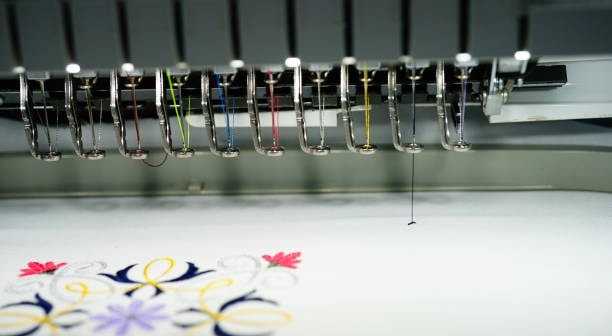
To realise sustainable success, the three personalities aforementioned ought to be adopted by the new business owner. Here’s how to do it:
A. Self-awareness
Identify the self-assertiveness pattern and learn more about the ways it impacts the business. This consciousness will prevent you from overestimating your strengths while pointing out your weaknesses and the areas that you should get assistance from other people.
B. Building a Balanced Team
Ensure that there is a strong team around you and people with different strengths and weaknesses the to balance. For instance, if you are a Visionary type, ensure you work with Managers and Technicians to help in putting your visions into practice and running the company.
C. Continuous Learning
Among the key psychological qualities consisting of flexibility and curiosity, one can highlight the necessity of never-stopping learning and personal growth. To become a true representation of the personalities, the individual need to pursue academic classes, attend trouncing and have mentors to help in the acquisition of various skills. This will make you a better rounded business owner.
D. Effective Communication
Ensure that there are freewheeling and efficient internal and external communications within the team. Introduce teamwork and make it clear who is responsible for what in the context of the business’s objectives. Continuously have follow-ups and stock changes as you use the strategy.
E. Balancing Work and Life
Thus, the work-life balance should be considered as having a critical importance for long-term performance. It is rather significant that each of the outlined personality types can encompass different stressors. Scientists might be pressurized with unimplemented concepts, Modernists by organizational issues, and Perfectionists by failure. Formulate ways of dealing with anxiety and other stressors in order to ensure personal responsibility.
Understanding how they work together
For successful running of a business house, the operation of the three personalities; Visionary, Manager, as well as the Technician type combined and interrelated. All the personalities have their assets and learning every individual’s strength and how to balance them can push a business to the next level. Now, let’s take a closer look at how personalities in the process intertwine and contribute to the balanced and healthy business climate.
1. The Visionary and the Manager
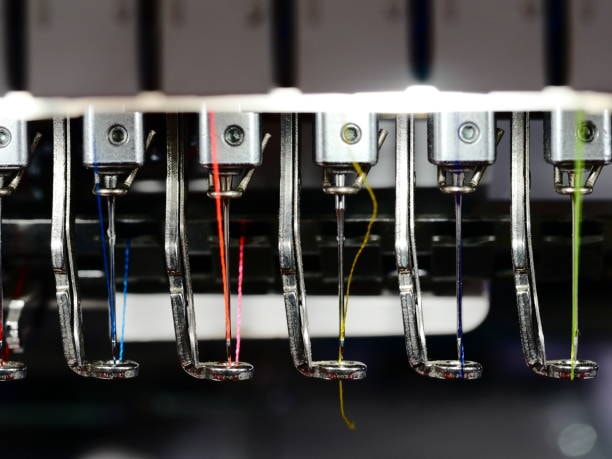
A. Complementary Roles
In every organization, The Visionary and The Manager are two friends who work hand in hand in the firm. The Visionary provides the idea for future enterprise activity and defines the lofty goals to be achieved; the Manager ensures the realization of these goals.
- Visionary: The character entice with a prospect of a great vision, looks for new ideas, and defines objectives in the future.
- Manager: The technologization of the vision, defining of short-term objectives, and the management of processes and results.
B. Effective Collaboration
It becomes important that the Visionary and the Manager who are to work together must be on the same page while at the same time respecting each other.
- Regular Meetings: Discuss with the team on meetings to be made to ensure that there is update on the progress, problems faced and other developments to be made. This also ensures correct correlation of the vision with the practical view of the project by the architects.
- Defined Roles: It elucidates every personality role and responsibility of the personalities involved. The Visionary should be more concerned with planning and creativity than the operational and financial aspects of the organization, these being the Manager’s responsibility.
- Feedback Loop: It is recommended to create feedback mechanism so that the Visionary can appraise the relative advancement of certain projects and the Manager can suggest practical considerations or earthly advice regarding the implementation of certain concepts.
C. Balancing Innovation and Practicality
It is therefore, very important to achieve the right balance between innovation and usability of the product. While the Visionary tends towards the daring and the new, the Manager keeps an eye on how the ideas conceived can be made to work.
- Pilot Projects: Before fully implementing a new idea, run pilot projects to test feasibility and gather data. This approach allows the Manager to assess the practical implications and the Visionary to refine the concept.
- Resource Allocation: When working on new ideas, first conduct pilots to see whether the idea is suitable or not and to obtain results. Such an approach helps the Manager to evaluate the possible effects of implementation, it helps the Visionary to clarify the idea.
2. The Manager and the Technician

A. Efficient Execution
The day-to-day routine of the business associates is managed by the Manager and the Technician to guarantee delivery of quality goods or services.
- Manager: Responsible for the general management, performance, and management of tasks related to the organization’s operations.
- Technician: Comprises more of the practical job of seeing to it that what is produced is of top quality.
B. Clear Processes and Standards
When it comes to coordination, there should be set procedures ad policies on how coordination should be done.
- Standard Operating Procedures (SOPs): Draw up working procedures that describe how the production process is to be conducted. This has the added advantage of requiring all instructional design documents to be consistent and efficient.
- Quality Control: Adopt quality assurances and standards to make certain that quality of work done by the Technician meets the business’s quality. It is therefore the recommendation of the writer that the Manager should review these measures periodically and where necessary make some adjustments.
- Performance Metrics: Establish goals that are measurable to determine efficiency among the employees. These metrics can be used by The Manager to realize areas, which require improvement and it also can be used by The Technician to judge their performance.
C. Continuous Improvement
Promote a culture a constant desire to make improvements in the work being performed by both the Manager and the Technician.
- Regular Training: Avail training sessions to the Technicians for the enhancement of their abilities and fro their update on current trends.
- Feedback Mechanisms: Have procedures through which the Technicians can give their feedback about certain processes. This may assist Managers to see where delays are arising, or where changes may be made, for improvements.
- Problem-solving: Encourage the others to team up to find solutions to a complex problem. Any problem that may come up between the functioning of the Manager and the Technician should be solved in a proper manner.
3. The Visionary and the Technician

A. Bridging the Gap
Therefore, to overcome the division of the Visionary and the Technician between the ideal and the realistic, the two roles should share responsibilities and work together. The Technician is the glory of turning these ideas into something real.
- Visionary: Creates new concepts and provides a vision for the development plan.
- Technician: Cools the flame, and simply realizes the ideas with great accuracy.
B. Translating Vision into Reality
The misunderstandings result from knowledge differences; therefore, communication and negotiation skills are essential in translating the Visionary’s ideas into practice.
- Clear Briefs: The Visionary should avail precise and elaborated briefs on what is expected of the Technician and the outcomes that are expected to be achieved.
- Technical Feasibility: As for the relationship between the Players, the Technician should evaluate the feasibility of the Visionary’s concepts and let them know about the obstacles.
- Collaborative Development: It is illustrated that it is constructive to set up joint elaborative meetings with the Visionary and the Technician.
C. Innovation with Quality
Also, the issue of quality when innovating has to be kept on check. The advancement must come from the Visionary’s creativity and innovation while the quality of t shirts comes from the Technician.
- Prototyping: Create samples that can be used to give the actual practice of certain designs before a large-scale implementation. This enables the Technician to further improve on the tactics while the Visionary can alter on embroidered apparel embroidery equipment.
- Iteration: This should be an evolutionary process wherein the ideas are built and recommended in a sequential manner. The opinion of the Technician plays an important role at this stage.
- Quality Standards: Make sure that when launching the innovation the quality is also given a top notch. The Visionary should appreciate and acknowledge the Technician’s work ethic manifested in a strict adherence to standards.
4. Integrating All Three Personalities
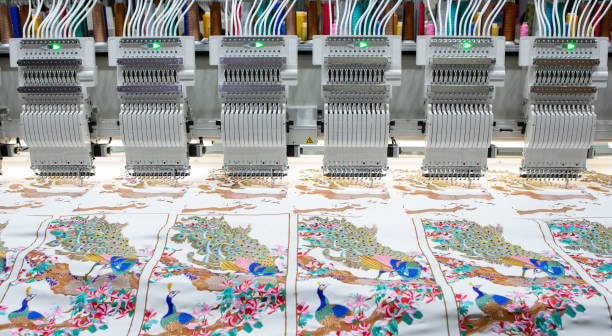
A. Unified Vision and Goals
Hence, all the three business personalities need to harmonize and move forward to a common target that is in an optimum convergence with the total business model.
- Strategic Planning: The Visionary, Manager, and Technician need to be engaged in the strategic sessions. This makes sure that all angles are covered and that the right path is being charted for the business in regards to its capacity.
- Goal Setting: Other possible suggestions include setting specific goals that are as specific as possible and wholly in line with the vision formulated. These goals should be comprehensible for each personality and their tasks in attaining them custom embroidery business embroidery designs.
B. Effective Communication
It has been identified that communication is the key to carrying out various cooperation processes.
- Regular Updates: Some of these include: Assigning specific time to give regular updates and have status meetings to obviously discuss progress or lack of it and new ideas. Thus, everyone is knowledgeable and in the loop about what is happening at each stage of the project.
- Transparency: Promote an environment of sharing which is characterized by open sharing of information. This generates confidence among the members and especially the new comers so that they can be in harmony with the rest of the members.
- Conflict Resolution: The conflicts have to be resolved effectively and efficiently. Promote the communication with the employees and work on the possible consensus for the general betterment of the business or company.
C. Leveraging Strengths
Fully utilize the elements of each personality to have a healthy and effective business climate in the company.
- Visionary: Both talent and passion: prove that the Visionary is creative and passionate in order to turn him into an example for the whole team.
- Manager: Count on the efficiency of the organization and discipline of the performance of the tasks by the Manager.
- Technician: focus on the Technician’s special skill set and precision to create client-oriented and high-value goods or services.
D. Adapting to Change
Successfully operating a business in the modern world implies constant adaptability to change. All personalities must be ready to change, and collectively deal with emerging issues.
- Agility: Promote the organisational culture of ‘frequent and fast’ change that would allow the business to react to the market changes and new possibilities..
- Continuous Learning: POne should encourage the spirit where one is always keen on learning and even improving on what has already been learnt. Make sure to know what is present and what is new in the industry.
- Resilience: Under the existing structure, seek to create sympathy to improve work relationships and group capacity. This assists the team to be able to overcome any form of hardship and come out of the other end much stronger.
Conclusion
Embarking on the process of start an embroidery business is a process that contains a lot of prospects and risks, in fact the business is ambitious and creative, but it has to be built on a strict plan and carried out meticulously. This ultimate guide has also incorporated vital aspects like grasping the market, getting skill and tools, creating an appropriate brand image, and advertising and marketing the products. Before you embark on this entrepreneurial venture, therefore, try to ensure that you realize that learning never stops, the market is dynamic and must be responded to dynamically, and that customer and supplier relations are key to the success of the enterprise. Considering all the above points, thus, technology, creativity, and quality by all means will ensure that your home embroidery business thrives in the face of competition for a long time.


